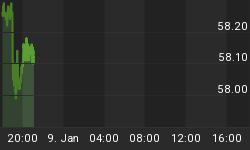Anyone who remembers the advent of the exclusive and swanky Diners Club card, circa 1949, knows well the history of digital currency.
Today, at the height of a volatile cryptocurrency craze, we would do well to remember that none of this is entirely new.
In fact, the first digital currency actually emerged way back in 1992. We just weren’t ready for it then, and we may not be ready for it now.
By the early 1900s, the first credit cards hit the scene when large hotels and department stores issued paper cards to their high-end customers. Diners Club’s claim to fame was that it was the first company to launch a general merchandise credit card in 1949, for which it charged a hefty 7-percent transaction fee.
Diners Club soon faced competition when Bank of America introduced the first general credit card and later spun-off Visa in 1958. A network of competing banks then introduced MasterCard in 1966.
The birth of the internet in 1990 made the concept of digital money possible. Beyond our wildest imaginations, new forms of payment could exist—intangibly—in purely electronic form.
Outside of the cryptocurrency space, however, digital currency traveled a very rough road—one that began, as a successor to credit cards, in 1992, and brings us to today, when the market is flooded with over 1,500 different cryptocurrencies, all vying for market share and most prepared to meet their maker.
Here's where it all started:
DigiCash, 1992
DigiCash is the pioneer of online payment systems, but chances are you’ve never even heard of it.
Founded in 1989 by American computer scientist and cryptographer David Chaum, DigiCash introduced two digital currency systems: eCash and cyberbucks, both based on Chaum's blind signature protocols that kept user identities anonymous and untraceable (sound familiar?).
Related: The Myth Of Infinite Economic Expansion
Banks were unable to trace how merchants were spending their eCash; however, complete anonymity was compromised because merchants had to return their ecoins to the banks.
It ultimately fizzled out due to poor adoption by banks and merchants and a glaring lack of adequate support for user-to-user transactions. Simply put, it was before its time.
CyberCash, 1994
CyberCash was one of the more notable successes in the digital money industry, and even enjoyed the backing of the FDIC.
CyberCash was a credit card payment processing company that started using SET (secure electronic transaction) architecture to provide digital micro-payment solutions back in 1994. SET is a communication protocol for securing credit card transactions developed by Visa, MasterCard and a host of tech heavyweights.
But it also had a fundamental flaw in that it prioritized security over usability. All CyberCash users were required to obtain certificates through a long and arduous process. The system was hit hard by the Y2K bug of 2000 and the company ended up going bankrupt.
E-gold, 1996
This digital currency was launched by renowned oncologist Douglas Jackson in 1996.
E-gold lived up to its name and was backed by real gold--a fact that made it very popular. It even managed to garner more than 5 million user accounts across hundreds of countries. Continued hacking attacks on the platform and widespread use by money launderers and extortionists unfortunately sunk the company in 2009.
WebMoney, 1998
WebMoney is a Moscow-based company that provides a wide range of peer-to-peer payment solutions including internet-based trading platforms. The company launched WebMoney, an all-purpose digital currency in 1998, one of the few surviving digital currencies that are not crypto. The currency is still widely accepted and used by millions. It can also be converted to fiat currencies such as the Ruble, USD, GBP and even bitcoin.
Liberty Reserve, 2006
Liberty Reserve is another failed digital currency that attempted to create a centralized anonymous money transfer platform. The currency allowed users to create accounts and make money transfers without any form of verification.
As you might expect, the platform became a favorite hangout for cybercriminals, which led to its eventual shutdown in 2013.
Perfect Money, 2007
The shutdown of Liberty Reserves led to the rapid growth of its Russian-based rival, Perfect Money, as its users flocked to the newer platform.
Perfect Money is a digital money platform that offers pretty much the same services that Liberty Reserves did, minus the lack of verification. The platform works with multiple currencies including USD, EUR, BTC, GBP etc.
Bitcoin, 2009
Ultimately, all attempts at creating digital currencies face a major problem--they all require a middleman who has to earn the trust of users. Bitcoin and other cryptocurrencies sidestep this obstacle by working as decentralized platforms. Related: Amazon Paid Zero Federal Taxes In 2017
Created in 2009 and easily the most successful digital currency ever, bitcoin is powered by an open-source blockchain protocol that stores transaction information in a distributed ledger. This makes it near-impossible to hack the network, though individual crypto exchanges are by no means impenetrable.
The popularity of bitcoin has spurred the invention of hundreds of other cryptocurrencies, with some created for niche sectors such as healthcare and logistics.
Now, the argument is that we still have a long way to travel down the cryptocurrency path, and that Bitcoin itself is merely the ‘gateway drug’ to other cryptocurrencies. In a couple of decades, it’s possible that no one will remember Bitcoin, either.
By Jan Bauer for Safehaven.com
More Top Reads From Safehaven.com:
















